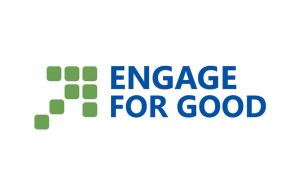New donors declined by 11 percent and new donor revenue dropped by $11.3 million in the first year that American Cancer Society (ACS) paused its direct mail acquisition program. Over five years, the hiatus would have had a projected impact of $29.5 million to the organization.
The Atlanta, Ga.-based charity offered perspectives on its re-entry into mail during a presentation titled “Direct Mail Acquisition – Engine for Growth or Treadmill for Survival?” The 45-minute session took place during the second day of the Direct Marketing Association Nonprofit Federation’s New York Nonprofit Conference today at the New York Hilton.
ACS suspended its direct mail acquisition program in January 2013 amid a three-year transformation that consolidated the nearly billion-dollar organization from 13 separate divisions into one single 501(c)(3) entity. Direct mail acquisition was relaunched in June 2014.
Catharine Holihan has been director of direct marketing at ACS for six months, after a tenure as customer engagement manager. She led the panel that also included Lauren Ashcraft, senior consultant, direct mail renewal, Peggy Jaynes, senior consultant, direct mail, acquisition, ACS, and representatives from its marketing agency, Merkle, including Jeff Patrick, chief strategy officer and vice president, nonprofit, and Senior Vice President Jennifer Quinlan.
“Traditional legacy channels get a lot of pressure to continue to perform, so for a lot of us, direct mail is the bulk of revenue for direct response programs,” Holihan said. Four direct mail programs raise about 80 percent of direct response revenue for ACS.
In late 2012, the decision was made to pause the direct mail acquisition program for 2013. Historically, ACS was very siloed by channels, Holihan said. Prior to transformation, each division decided its own level of participation. “The important question became: How are we doing to reinvent the direct mail program to align with the organization’s new priorities,” Holihan said.
In 2012, ACS generated 252,000 new donors through its $10 million investment in the direct mail acquisition program. Multi-year donors generate 45 to 48 percent of total revenue, which peaked in 2008 at about $1.2 billion.
“It’s tempting to look at things through a one-year lens but the runway for direct mail acquisition is much longer than that. For every $1 we invest in direct mail acquisition, we bring in $7 over the course of three years,” Holihan said. “We need acquisition to feed the core audience or else the entire program loses profitably through the course of the natural customer cycle,” she said.
“It was understood that immediately, direct mail acquisition revenue was going to decline and we also knew revenue across other direct mail programs would decrease over time,” Ashcraft said. “What was apparent really quickly, our renewal program was impacted immediately as well,” she said, adding that direct mail feeds other programs like planned giving and events. At their peak, direct mail donors accounted for more than 10 percent of contributors to ACS’ Relay For Life, which last year raised $355 million, $25 million less than the previous year. Direct mail donors give more than $51 million to planned giving.
The pause in direct mail acquisition would impact beyond ACS and into the sector as a whole since direct mail lists and co-ops are interconnected. “There will be speculation around why we did this, what happened. Ultimately, we trust our leadership and we take the responsibility to do the best we can with what we have,” Ashcraft said.
The goal for 2014 was to increase overall revenue by 12 percent. “We knew we needed to re-start direct mail acquisition as part of the marketing mix,” Holihan said. ACS started with a goal to bring in 125,000 new donors for 2014 at a cost per dollar raised (CPDR) of $1.05. The organization surpassed both goals, bringing in 136,000 new donors at $0.99 CPDR, in addition to beating its $4.4 million fundraising goal by $300,000. For only six months, July to December, ACS brought in $571,000 at $0.30 CPDR, according to Holihan.
Digital and email channels may be less expensive but it became evident that it would take longer to break even and fill the funnel, Jaynes said. “These channels weren’t necessarily going to fill the funnel as quickly as direct mail had,” she said.“It had to be a multichannel strategy to come back.”
Suspending direct mail and expecting to replace donors through the online channel may not respect what actual direct mail donors’ wishes are, according to Holihan.
ACS “reinvented the program and implemented an integrated strategy – not just direct mail – we’re digital, we’re email, we’re telefundraising,” Ashcraft said. “We’re focusing on net revenue efficiency and high-value donors,” she said.
The hiatus was a “strategic decision to orient our fundraising programs to maximize revenue from existing donor audiences, grow into new ones, and rethink how we were doing things,” Holihan said.
“The transformation really opened the door for communication not just in marketing team but across the organization. This dialogue was critical. Our finance team could actually talk about our marketing programs when we’re not in the room,” Holihan said. “Conventional wisdom doesn’t always apply. To step back and look at programs with fresh eyes helps greatly; test different things, see what will work for your organization,” she said.
“A conservative approach can work, I think we’re living proof of that.”











